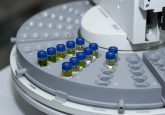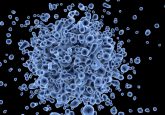Contact lens utilizes plasmonic nanostructures to detect glucose levels in tears

Scientists from the University of Houston (TX, USA) have developed a contact lens that can be utilized to detect glucose. This noninvasive test could offer an improvement on current methods by measuring glucose levels within human tears. The findings describing this new technology have been published in Advanced Materials.
“There’s no noninvasive method to do this,” commented Wei-Chuan Shih, one of the study authors. Shih continued: “It always requires a blood draw. This is unfortunately the state of the art.”
This new study takes advantage of the fact that glucose is an ideal target for optical sensing, using techniques such as surface-enhanced Raman scattering spectroscopy. To achieve this, a tiny device was constructed using layers of gold nanowires stacked on top of a gold film and produced using solvent-assisted nanotransfer printing.
The device makes use of surface-enhanced Raman scattering’s ability to detect small molecular samples by creating ‘hot spots’ within the nanostructure that enhance the signal.
Importantly, in order to make a flexible nanostructure that would be suitable for wearable electronics, the layered nanoarray was initially produced on a hard substrate, but then removed and printed onto a soft contact.
The researchers state that this contact lens sensor could provide a valuable alternative approach for the accurate monitoring of glucose levels. Shih explained further: “Everyone knows tears have a lot to mine. The question is, whether you have a detector that is capable of mining it, and how significant is it for real diagnostics.”
Although glucose is known to be present in tears, exactly how it correlates with blood glucose levels is still uncertain. However, the authors emphasize that the more important finding of this study is that this nanostructure is an effective mechanism for using surface-enhanced Raman scattering spectroscopy.
It is also hoped that this technology could have several other applications, beyond the measurement of glucose levels.
Sources: Jeong JW, Arnob MM, Baek KM, Lee SY, Shih WC, Jung YS. 3D cross-point plasmonic nanoarchitectures containing dense and regular hot spots for surface-enhanced Raman spectroscopy analysis. Adv. Mater. 28(39), 8695–8704 (2016); www.uh.edu/news-events/stories/2016/September/09272016-Researchers-Create-Glucose-Sensing-Contact-Lens.php





